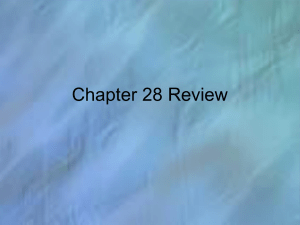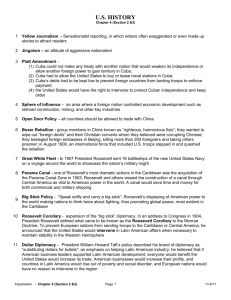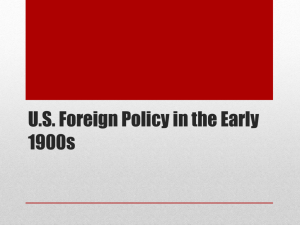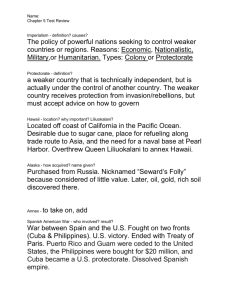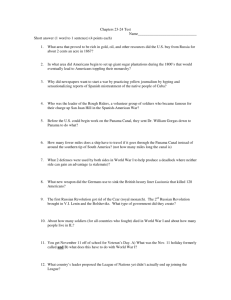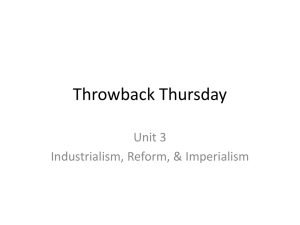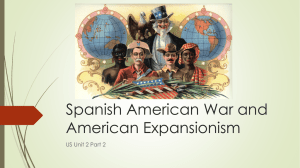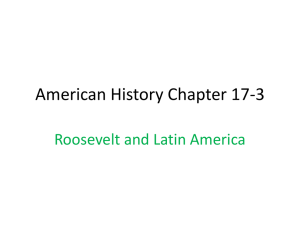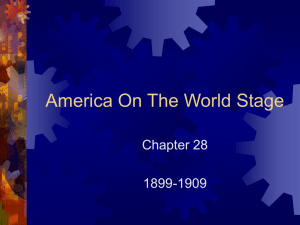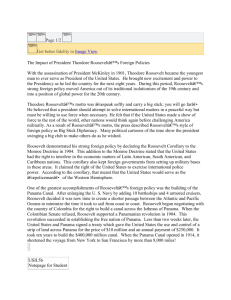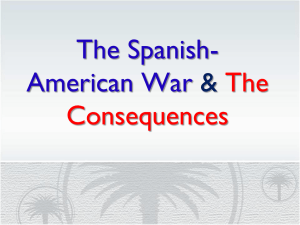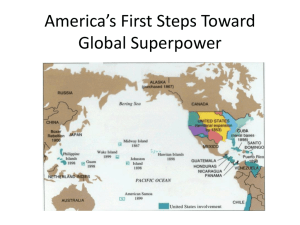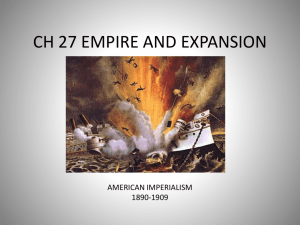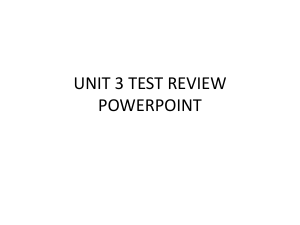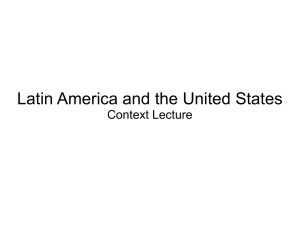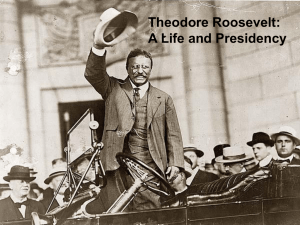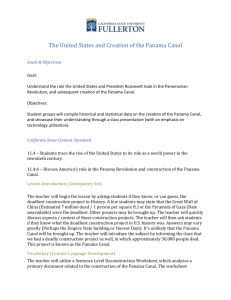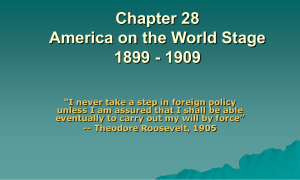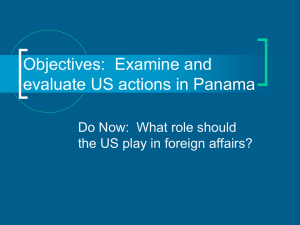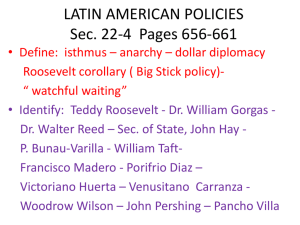America in Asia and - Ms. McManamy's Class
advertisement
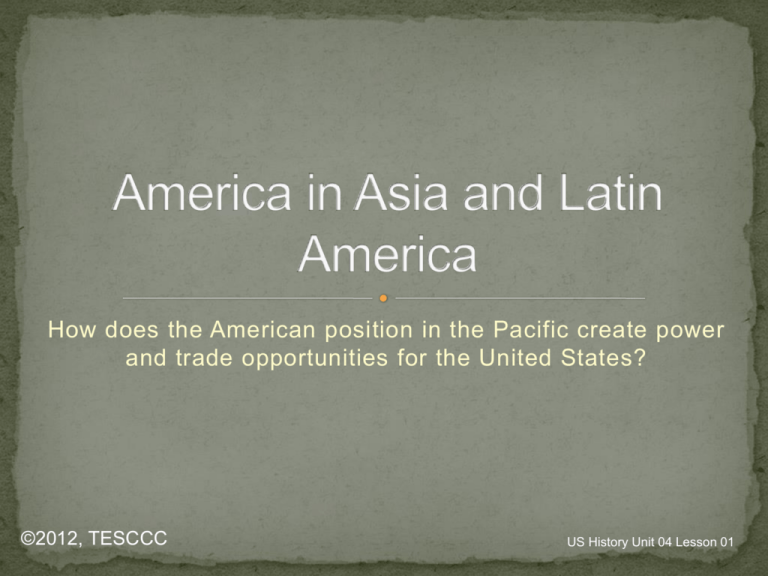
How does the American position in the Pacific create power and trade opportunities for the United States? ©2012, TESCCC US History Unit 04 Lesson 01 Spheres of influence U.S. Secretary of State John Hay – “Open Door” policy for trading rights Boxer Rebellion – a year of natural disasters contributed to a rebellion of farmers and works against foreign influences Isolationist Japan opened to commerce Commodore Matthew Perry 1894 – defeated China Russo-Japanese war – defeated Russia Theodore Roosevelt – mediates peace between Russia and Japan with the Treaty of Portsmouth, he wins the Nobel Peace Prize as a result U.S. needed to keep foreign powers out of the Caribbean to keep it secure. U.S. Caribbean Interests Caribbean region was a valuable market for American goods and investment, especially agricultural goods. A canal in Central America was necessary to create easier access between the Atlantic and Pacific oceans. American possession Congress passed a resolution before the Spanish- American war NOT to annex Cuba. “protectorate” Platt Amendment An amendment that forbade annexation of Cuba. It dictated the conditions for the withdrawal of United States troops remaining in Cuba at the end of the Spanish-American War and defined the terms of CubanU.S. relations, until it was abrogated by the 1934 Treaty of Relations. Isthmus of Panama President Roosevelt tried to negotiate with Colombia to let the U.S. build the canal in an area that was a part of Colombia. President Roosevelt eventually worked with Panamanian leaders to gain control of a 10-mile strip of land – the Panama Canal Zone. 10 years to complete Geography – different elevations Series of locks were designed by engineers to address this issue Dr. Walter Reed discovered that mosquitoes spread yellow fever. Dr. William Gorgas (U.S. Army) discovered how to reduce the spread of yellow fever – drained swamps, cut down vegetation, treated standing water with oil to prevent mosquito breeding Human Factors Panamanian Revolution supported by the U.S. The U.S. divided Panama with the Canal Zone which causes tension in the region through the 20th century. Jimmy Carter returns the Canal Zone to Panama in 1999. Physical Factors Canal Zone is a 48 mile international waterway that allows ships to pass between the Atlantic and Pacific Oceans. The canal saves about 8,000 miles as the alternate route in a journey around Cape Horn at the southern tip of South America. Roosevelt Corollary to the Monroe Doctrine “Speak softly and carry a big stick.” “Dollar Diplomacy” - encouraged American investment in the Caribbean Sent in the U.S. Marines to collect debts in Latin America if a country struggled to repay its American loans Policy was “watchful waiting” Sent troops to Haiti, Nicaragua, and the Dominican Republic to protect American interests Purchased the Virgin Islands – expanding colonial empire Sent General John J. Pershing to lead an American Expeditionary Force to Mexico to put down rebel troops led by Pancho Villa
